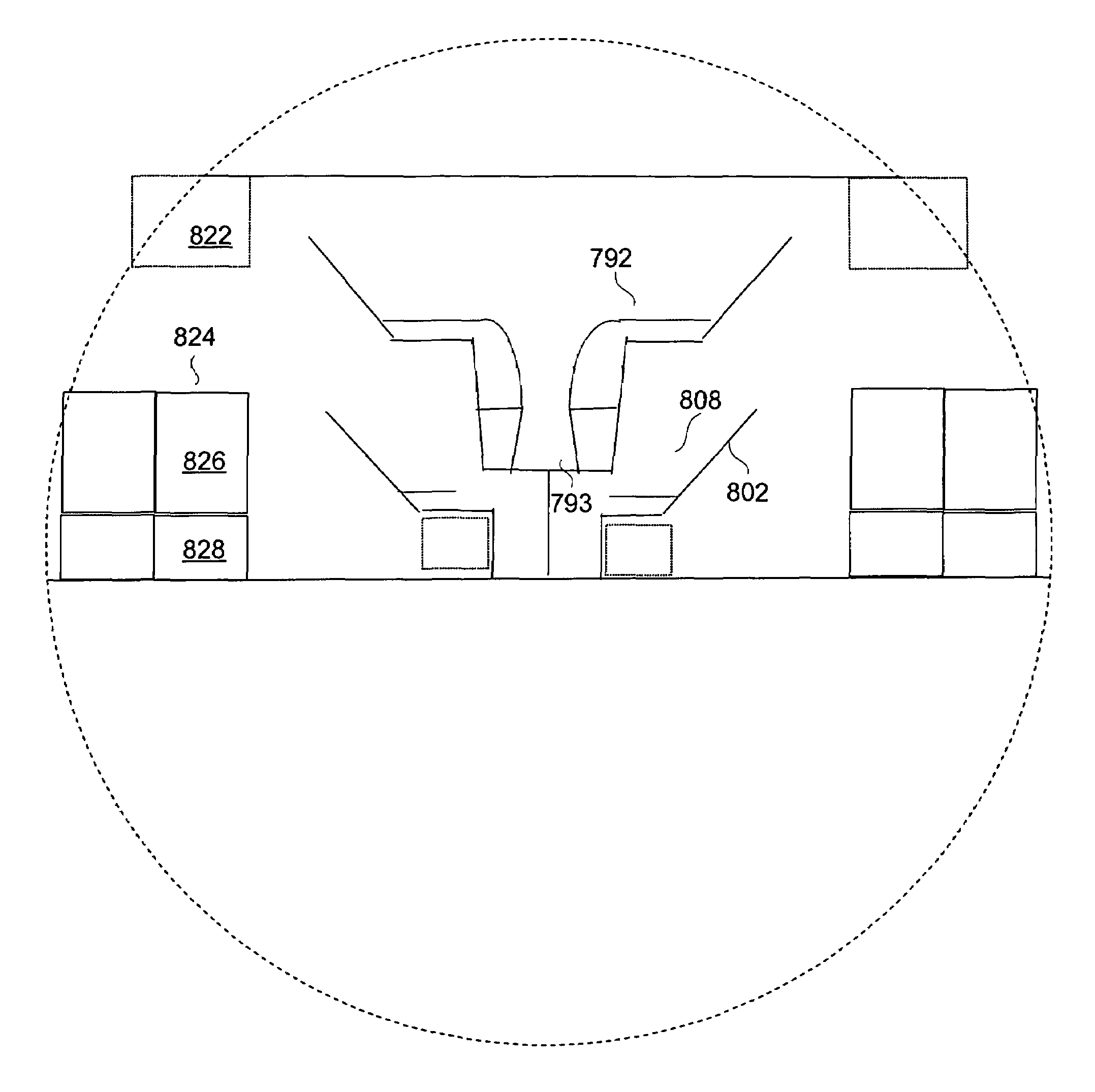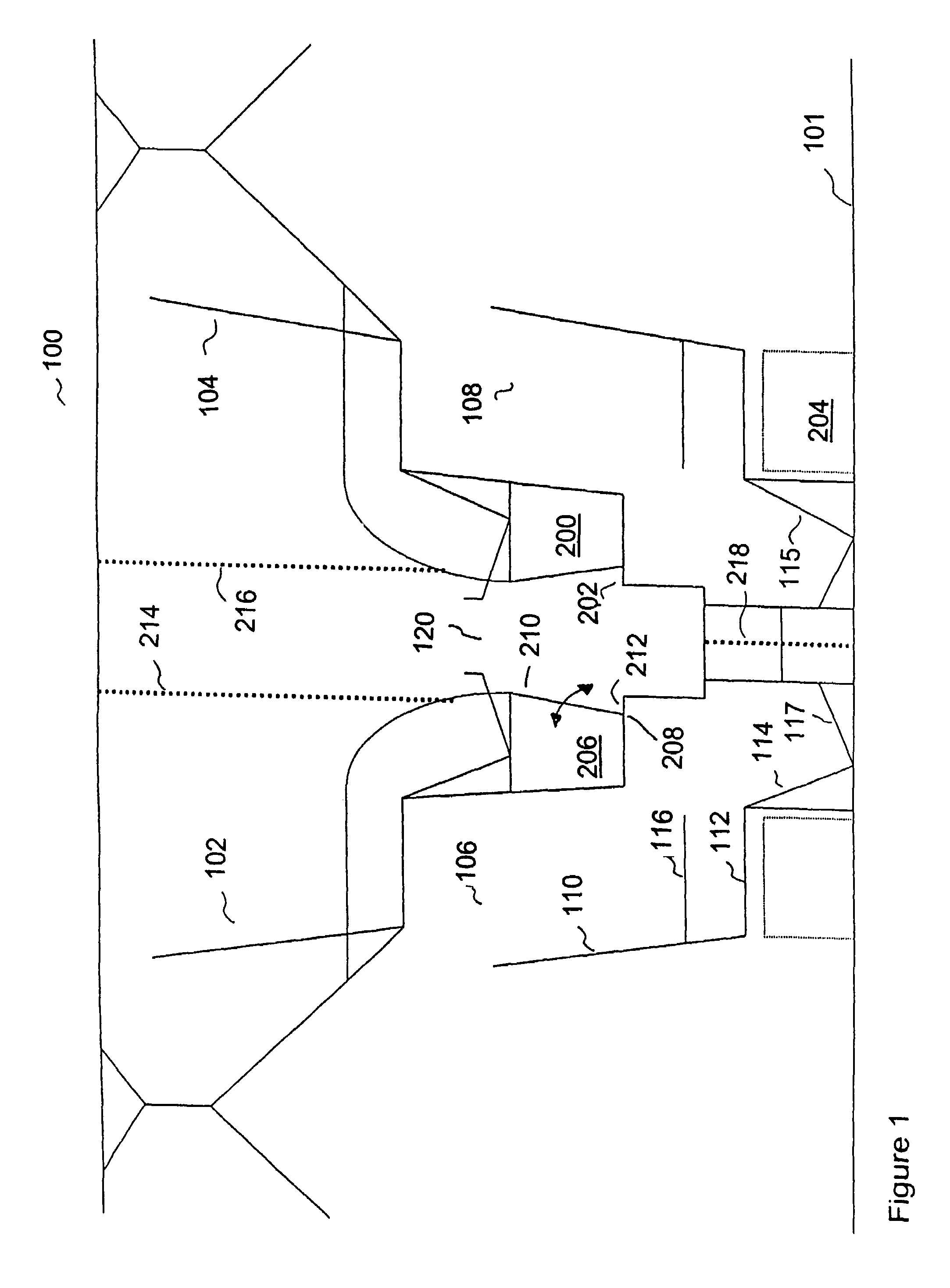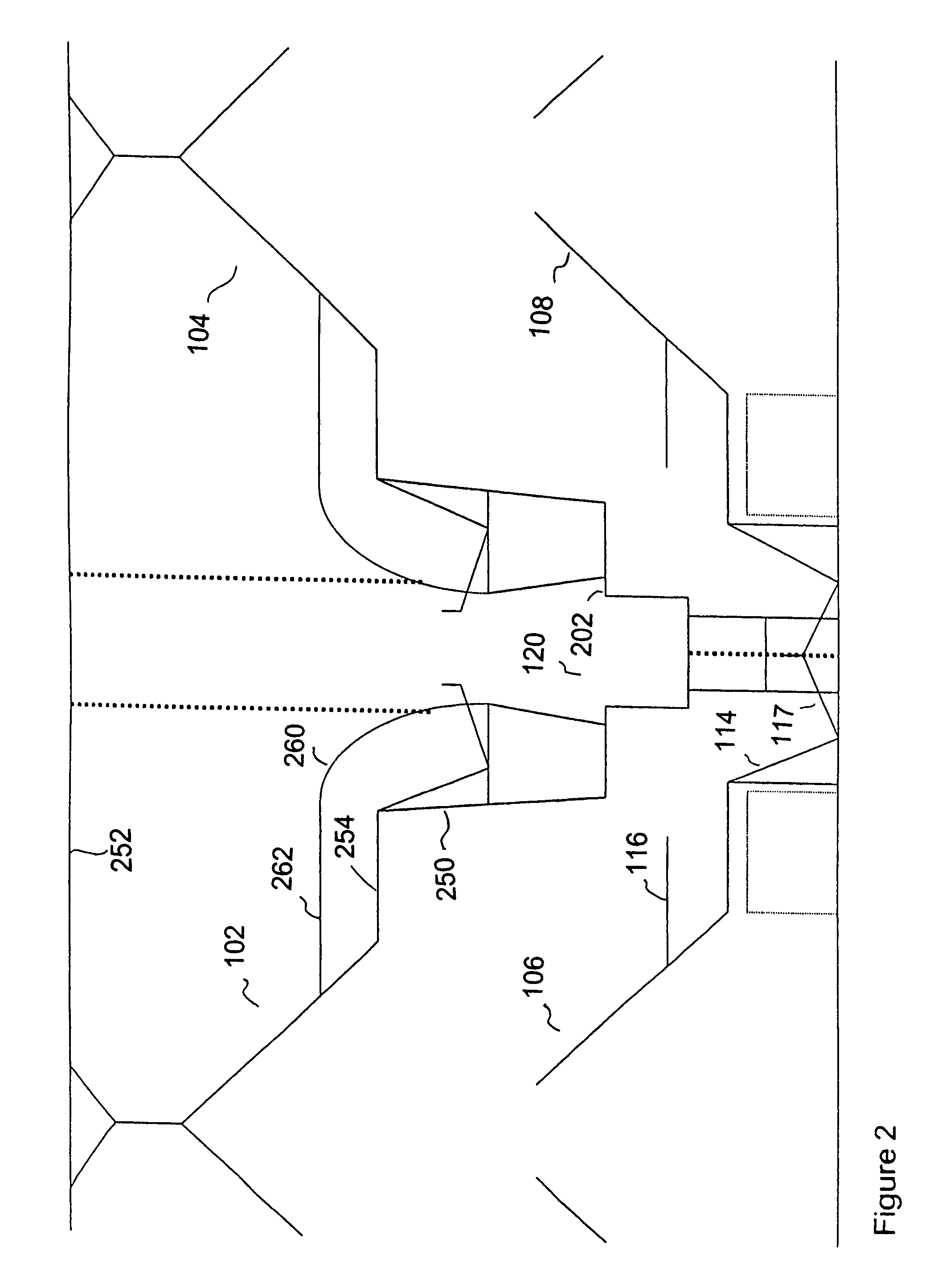Comfortable seating arrangements with easy access
a seating arrangement and easy-to-access technology, applied in the field of seating arrangements, can solve the problems of poor comfort of coach seats, good sleep in the skies,
- Summary
- Abstract
- Description
- Claims
- Application Information
AI Technical Summary
Benefits of technology
Problems solved by technology
Method used
Image
Examples
first embodiment
[0074]In the first embodiment, regarding seats in neighboring bottom rows, they differ by 180 degrees in orientation, and similarly for seats in neighboring top rows. For example, the aisle seat 102 differs by 180 degrees in orientation from its neighboring aisle seat 104. In other words, passengers in neighboring rows can be facing each other, orientation-wise.
[0075]In one embodiment, at least the interior bottom seats can be slidably mounted on a floor, allowing the seats to move in the forward and backward directions. For example, the bottom seat 108 can be slidably mounted on a floor 101 provided within the aircraft. Through such movements, neighboring seats can be further apart from or closer to each other. One way to allow such motion is to mount the interior bottom seats on one or more tracks.
[0076]For the first embodiment, one approach to mount a bottom seat onto the floor is to mount the seat onto one or more tracks. To lock its position, the seat can be tied or snapped to ...
fourth embodiment
[0149]FIG. 18 shows the fourth embodiment with seats in their emergency exit position. Emergency access open spaces for bottom seats can be in front of the seats. As an example, for the bottom row seat 508, the emergency access open space 540 is in front of the seat 508.
[0150]FIG. 19 shows a cross-sectional view of the fourth embodiment 500. To clarify the invention, the figure removes many structures. Some of the features shown in the figure include:[0151]the leg rests of five top row seats, 550, 552, 554 and 556, with the leg rest 520 of the interior top seat shown in FIG. 17a; [0152]the access open corridor 512 leading to the access open space 513;[0153]five pedestals, 560, 562, 564 and 566, with the pedestal 510 of the interior bottom seat shown in FIG. 17a to go up to the corridor 512 from bottom row seats to the aisle 570; and[0154]a step 572 to go up to the access open space 513 from the aisle 570.
[0155]In the fourth embodiment, regarding privacy, there can be partitions in f...
second embodiment
[0163]FIG. 20b shows one approach for an interior passenger in the first level to get to the aisle. In one embodiment, the approach is similar to the approach of the A passenger in an interior seat, such as the interior seat 628, slides the interior seat 628 backwards, lifts up the arm rest 630, changes its orientation from facing forward to facing the aisle, and walks behind the first-level aisle seat 604, through an access open space, to the aisle. In one embodiment, to reserve more space for the interior passenger to get to the aisle, the seat back of the first-level seats may not be able to recline as much as the seat back of the third-level seats.
[0164]FIGS. 20a-b are also drawn approximately to scale, except that the distance from the ceiling to the floor, such as the distance 602 in FIG. 20a, is approximately 11.6 feet. Though more than eight feet, such height is applicable to many planes. For example, the business class of Boeing 747 already has two levels, and the total he...
PUM
 Login to View More
Login to View More Abstract
Description
Claims
Application Information
 Login to View More
Login to View More - R&D
- Intellectual Property
- Life Sciences
- Materials
- Tech Scout
- Unparalleled Data Quality
- Higher Quality Content
- 60% Fewer Hallucinations
Browse by: Latest US Patents, China's latest patents, Technical Efficacy Thesaurus, Application Domain, Technology Topic, Popular Technical Reports.
© 2025 PatSnap. All rights reserved.Legal|Privacy policy|Modern Slavery Act Transparency Statement|Sitemap|About US| Contact US: help@patsnap.com



